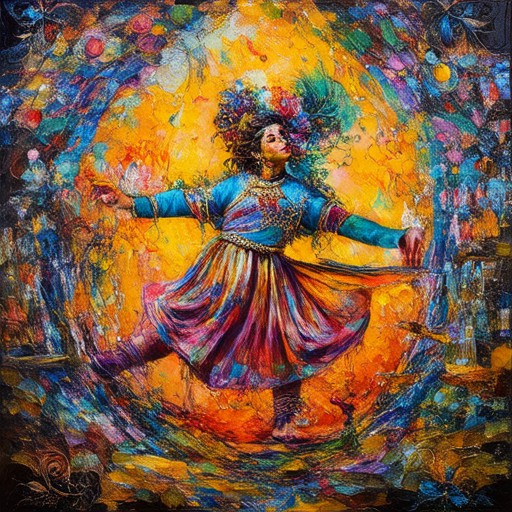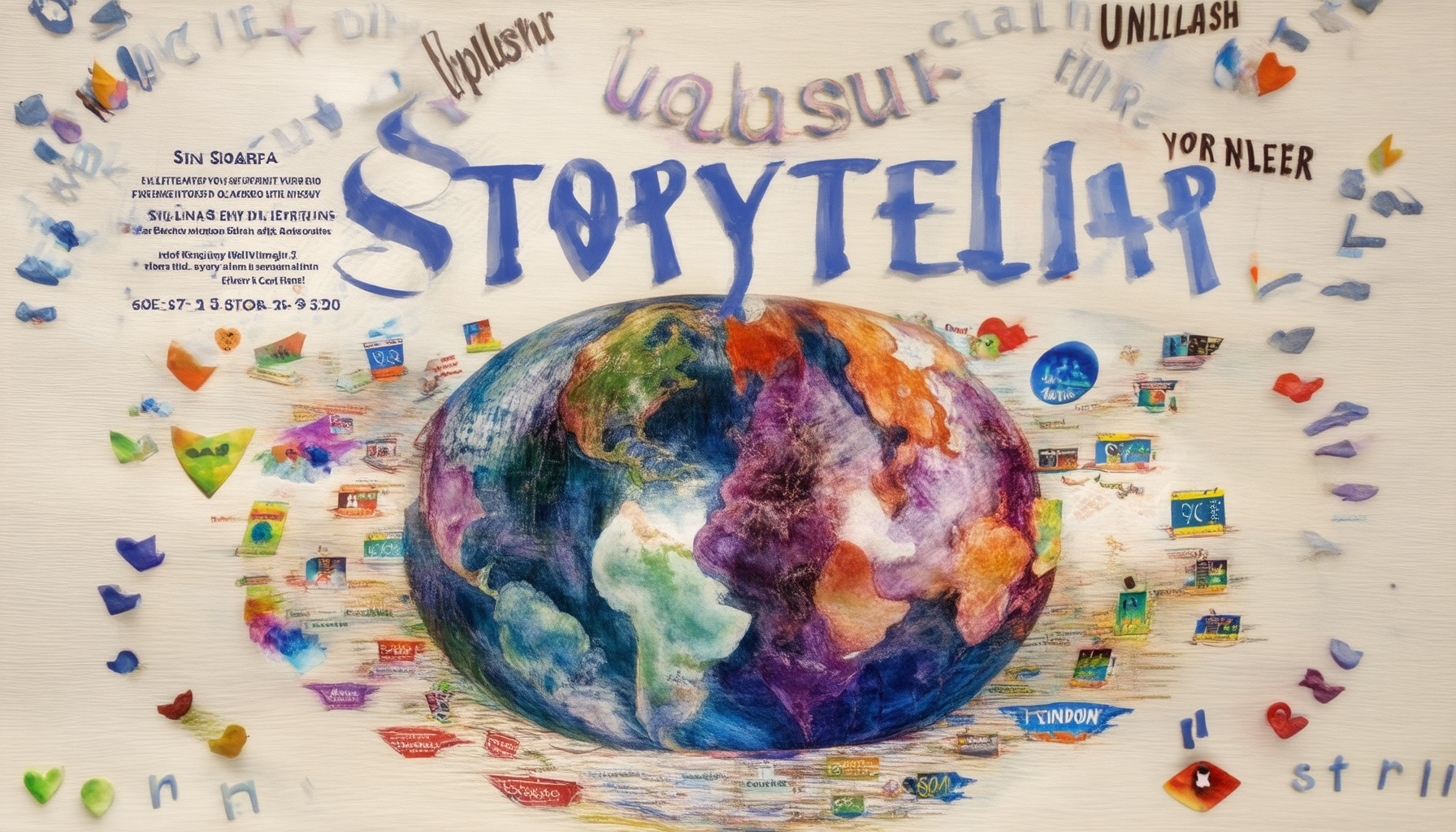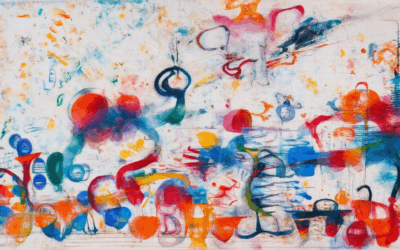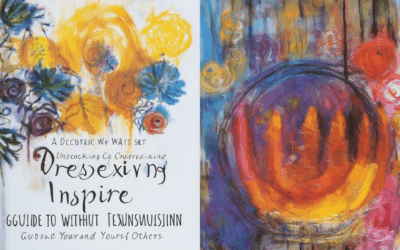Storytelling has long been recognized as a powerful medium for human connection, cultural preservation, and personal growth. At its core, storytelling serves as a dynamic form of self-expression, allowing individuals to explore their inner worlds, share their truths, and connect with others on a deeply profound level. Whether through written words, spoken narratives, or visual tales, stories are more than just sequences of events—they are mirrors of our souls, reflecting our identities, emotions, and aspirations. In this article, we delve into the multifaceted nature of storytelling as a tool for self-expression, examining its psychological impact, its role in shaping personal identity, and its evolution in the digital age. From the therapeutic benefits of journaling to the artistic elements of narrative crafting, storytelling emerges as a universal language that transcends boundaries and fosters empathy. Join us as we uncover the transformative power of storytelling as a means of self-discovery, connection, and creative expression.
Key Takeaways
– Storytelling is a powerful tool for self-expression, connecting people globally through shared narratives.
– Writing offers a therapeutic outlet for emotional release and personal growth, fostering introspection and creativity.
– Visual, performance, and literary arts provide diverse channels for creative expression, each resonating deeply with individual experiences.
– Patrick Mettraux’s blog explores storytelling’s transformative power, inspiring creativity and connection.
– Engaging with platforms like Medium can further enhance self-expression and audience reach.

The Five Cs of Storytelling
The art of storytelling is often broken down into key components that help create engaging and memorable narratives. Among the most widely recognized elements are the “Five Cs” of storytelling:
- Character : The foundation of any great story lies in its characters. Whether it’s a protagonist overcoming adversity or an antagonist driving the plot, well-defined characters give depth and relatability to the story. A compelling character allows readers to connect emotionally, making the narrative more impactful.
- Context : Context provides the setting and background of the story, offering essential details about the time, place, and circumstances. Effective context helps establish the tone and atmosphere, allowing readers to immerse themselves in the world being portrayed.
- Conflict : Conflict introduces tension and drives the story forward. It could be an internal struggle, such as a character facing personal demons, or an external conflict, like a battle between opposing forces. Without conflict, a story lacks direction and interest.
- Climax : The climax is the pivotal moment where the story reaches its peak. This is where the outcome becomes uncertain, creating suspense and keeping the audience engaged. The climax resolves the central conflict and often determines the course of the rest of the story.
- Closure : Finally, closure provides the resolution, wrapping up the story neatly. It can be a bittersweet ending, leaving the audience with a sense of completion or reflection. A well-crafted closure leaves a lasting impression, whether it’s a happy ending or a thought-provoking conclusion.
By mastering these five elements, storytellers can craft narratives that captivate audiences, evoke emotions, and leave a lasting impact.
Why Does Storytelling Evoke Human Emotions?
Storytelling is a universal human phenomenon that transcends culture, time, and age. It has the unique ability to connect people emotionally, creating a bridge between the teller and the listener. But why does storytelling evoke such strong human emotions? Let’s explore the science and psychology behind it.
The Role of Brain Chemistry in Emotional Connection
When we engage with a compelling story, our brains release a cascade of chemicals that contribute to the emotional experience. Oxytocin, often called the “love hormone,” plays a significant role. It promotes feelings of trust, bonding, and affection, which are crucial for forming emotional connections. Dopamine and serotonin also come into play, as they reinforce positive emotions and contribute to the overall sense of pleasure associated with storytelling.
Cognitive Load Theory and Emotional Simplification
Stories simplify complex emotions and experiences into relatable narratives. According to cognitive load theory, storytelling reduces the mental effort required to process information, allowing listeners to focus on the emotional and symbolic aspects of the tale. This simplification fosters a deeper emotional resonance, making stories memorable and impactful.
The Power of Empathy and Shared Experiences
One of the most remarkable aspects of storytelling is its ability to enhance empathy. By imagining themselves in the protagonist’s position, readers develop a sense of shared experience. This emotional alignment strengthens the connection between the storyteller and the audience, creating a bond that goes beyond words.
Evolutionary Perspectives on Storytelling
From an evolutionary standpoint, storytelling may have served survival benefits. Sharing stories allowed early humans to bond, exchange knowledge, and coordinate social actions. This communal activity likely contributed to the development of trust and cooperation, which are critical for group survival. Today, storytelling continues to fulfill these needs while also providing intellectual stimulation and emotional fulfillment.
Examples Across Different Media
The emotional impact of storytelling is evident across various media forms, including literature, film, and theater. Novels like “Pride and Prejudice” and movies like “The Lion King” exemplify how stories can evoke profound emotions, teaching lessons, and inspiring audiences to reflect on their own lives.
Conclusion
Storytelling is more than just a method of entertainment or communication. It is a fundamental human behavior that taps into our emotional core, offering insights into our psychology and society. By understanding the mechanisms behind storytelling’s power, we can appreciate its enduring influence on human culture and connection.

The Purpose of Storytelling in Understanding Self
Storytelling is a powerful tool for introspection and self-discovery. It allows us to explore our lives, experiences, and emotions in a meaningful way. By crafting stories, we can better understand ourselves, our motivations, and the world around us. Here’s why storytelling matters in understanding self:
- Self-Reflection :
Telling your story encourages introspection. As you recount your experiences, you gain insight into your thoughts, feelings, and decisions. This process helps you identify patterns, strengths, and areas for growth. It’s like looking into a mirror and seeing yourself more clearly. - Identity Formation :
Stories shape our sense of identity. Whether it’s overcoming challenges, learning from mistakes, or celebrating successes, these narratives define who we are. They help us establish a coherent sense of self and give us a roadmap for moving forward. - Emotional Expression :
Storytelling provides a safe space for expressing complex emotions. Through words and sentences, we can articulate feelings that might otherwise be difficult to convey. This emotional release can lead to personal healing and a deeper connection with oneself. - Connection to Others :
While storytelling is personal, it also connects us to others. Sharing our stories can help us relate to similar experiences, fostering empathy and building bridges between people. This shared humanity is a powerful way to feel understood and validated. - Inspiration and Growth :
Reflecting on past stories can inspire future actions. By learning from our journey, we can set goals, overcome fears, and embrace opportunities for growth. Stories act as a compass, guiding us toward becoming the best version of ourselves.
How to Begin Telling Your Story
Starting to tell your story can feel overwhelming, but it’s worth the effort. Here are a few steps to get started:- Start Small : Begin with a single memory or moment that stands out.- Be Honest : Authenticity is key. Write or speak from your heart without judgment.- Seek Feedback : Share your story with trusted friends or mentors who can offer perspective.- Journal Regularly : Keeping a journal helps capture your thoughts and evolve your narrative over time.
By embracing storytelling, we unlock a gateway to self-awareness and personal development. Our stories are not just history—they’re a map to our present and a guide to our future.

Is Story a Creative Expression?
Story is indeed a powerful form of creative expression. It allows individuals to convey ideas, emotions, and experiences in a meaningful and relatable way. Through storytelling, we can share tales that inspire, educate, and connect people across cultures and generations.
Stories serve as a bridge between the past, present, and future, enabling us to learn from history, navigate the complexities of the present, and imagine a better tomorrow. By crafting and sharing stories, we engage our imaginations, explore diverse perspectives, and foster empathy.
At its core, storytelling is about communication. It enables us to express ourselves authentically, whether through written words, spoken narratives, or visual storytelling. This form of creative expression has been a cornerstone of human culture for centuries, shaping our understanding of the world and ourselves.
Patrick Mettraux explores the art of storytelling in-depth, offering insights into how it can inspire and transform lives. Check out their blog to discover how storytelling can be a catalyst for creativity and connection.
How Does Writing Allow You to Express Yourself?
Writing is a powerful tool that provides a unique medium for self-expression, allowing individuals to articulate their thoughts, emotions, and experiences in a way that is both personal and impactful. Through writing, you can explore complex emotions, share stories, and communicate ideas that might be difficult to convey verbally. Here’s how writing enables self-expression:
- Personal Journaling : Writing in a journal offers a safe space to document daily thoughts and feelings. This practice fosters introspection and helps individuals process emotions, track personal growth, and reflect on life experiences.
- Creative Expression : Whether through poetry, prose, or storytelling, writing allows for the creation of imaginative worlds and characters. This form of expression can help individuals connect with their inner selves and explore themes that resonate deeply with their personal journey.
- Communication Beyond Words : Writing bridges the gap between thoughts and reality, turning abstract ideas into tangible words. This is particularly useful for those who struggle with verbal communication or wish to organize their thoughts before speaking.
- Building Connections : Sharing written pieces with others can create meaningful connections. Whether through blogs, letters, or published works, writing allows you to reach audiences and engage with them on a deeper level.
- Emotional Release : Writing often serves as a cathartic experience, helping individuals release pent-up emotions and find clarity. This process can be therapeutic and empowering, enabling personal growth and healing.
At Patrick Mettraux, we believe in the transformative power of writing. Our blog, Patrick Mettraux , is a hub for inspiration and creative exploration, offering articles that delve into personal narratives and artistic perspectives. Explore our collection today and discover how writing can unlock your creative potential.
Additionally, if you’re looking for similar platforms, consider visiting Medium , which also provides a space for writers to share their stories and connect with like-minded individuals. Both platforms offer rich opportunities for self-expression and growth.
By embracing writing, you unlock a channel for self-discovery and connection. Start journaling, experiment with different genres, and let your words flow freely. The world is waiting to hear your story.

The Three Main Types of Creative Expression
Creative expression is a broad concept that encompasses various forms of artistic and emotional communication. Here are the three primary categories:
- Visual Arts
- Painting: Through brushstrokes and color, artists convey emotions and stories.
- Sculpture: Creating three-dimensional forms to evoke reactions and thoughts.
- Digital Imaging: Manipulating photos to create unique visuals, often for art or design purposes.
- Architecture: Designing spaces that inspire and influence human behavior.
-
Performance Art
- Theater: Acting, dancing, and performing scripts to tell stories and convey themes.
- Dance: Using movement to express emotions and tell tales.
- Music: Composing melodies and rhythms that resonate with listeners on an emotional level.
- Spoken Word: Combining poetry with acting to deliver impactful messages.
-
Literary Arts
- Poetry: Crafting verses that evoke imagery and feelings through wordplay.
- Prose: Writing novels, essays, and short stories to explore ideas and narratives.
- Drama: Scriptwriting for stage or screen that focuses on character development and conflict resolution.
-
Media Arts
- Film: Telling stories through visual and auditory elements to engage viewers.
- Photography: Capturing moments and subjects to communicate ideas visually.
- Animation: Creating sequences that bring characters and stories to life.
Each form of creative expression allows individuals to communicate their thoughts, emotions, and perspectives uniquely. Whether through visual mediums, live performances, or written words, the impact of creative expression is profound and varied.
Explore more creative insights on Patrick Mettraux.





0 Comments